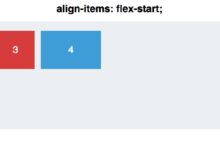Community based real estate development training program: 7 Powerful Benefits of a Community Based Real Estate Development Training Program
Imagine transforming your neighborhood from the inside out—equipping locals with the tools to build, invest, and thrive in real estate. That’s the promise of a community based real estate development training program.
What Is a Community Based Real Estate Development Training Program?

A community based real estate development training program is an educational initiative designed to empower local residents with the knowledge, skills, and resources needed to participate in real estate development within their own neighborhoods. Unlike traditional real estate education, which often caters to investors or professionals from outside communities, this model prioritizes inclusion, equity, and local ownership.
Core Principles of the Program
At its heart, a community based real estate development training program operates on several foundational principles:
- Local Empowerment: Residents are trained to lead development projects in their own communities, reducing dependency on external investors.
- Equity and Inclusion: The program actively seeks to include marginalized groups, including low-income individuals, women, and minorities.
- Sustainable Development: Emphasis is placed on environmentally responsible and socially sustainable building practices.
- Capacity Building: Participants gain practical skills in real estate finance, project management, zoning laws, and community organizing.
How It Differs from Traditional Real Estate Education
Traditional real estate training often focuses on maximizing profit for individual investors, frequently leading to gentrification and displacement. In contrast, a community based real estate development training program emphasizes collective benefit and long-term community stability.
For example, while a standard real estate course might teach how to flip houses for quick returns, a community-focused program would teach how to rehabilitate homes while preserving affordability and tenant rights. This shift in focus is critical in neighborhoods facing economic distress or rapid change.
“When communities control development, they control their destiny.” — PolicyLink, a national research and action institute focused on equity.
Why Community-Based Real Estate Development Matters
The rise of community based real estate development training programs is a response to decades of top-down urban planning that has often excluded the voices of those most affected by development decisions. These programs are not just about building homes—they’re about building power, wealth, and resilience from within.
Addressing Systemic Inequities
Historically, communities of color and low-income neighborhoods have been systematically excluded from real estate ownership and development opportunities. Redlining, discriminatory lending practices, and lack of access to capital have created generational wealth gaps.
A community based real estate development training program directly confronts these inequities by providing education and access to tools that were previously out of reach. According to a Urban Institute report, increasing minority homeownership and development participation can close the racial wealth gap by up to 30% over time.
Preventing Displacement and Gentrification
One of the most urgent challenges in urban development today is gentrification—where rising property values displace long-time residents. A community based real estate development training program equips locals with the skills to develop property without being priced out.
For instance, in cities like Oakland and Detroit, community land trusts (CLTs) formed by program graduates have successfully preserved affordable housing by collectively owning land and leasing it to homeowners. This model ensures long-term affordability and community control.
Building Local Economic Resilience
When real estate development is led by community members, the economic benefits stay local. Money spent on construction, design, and management circulates within the neighborhood rather than flowing to outside corporations.
community based real estate development training program – Community based real estate development training program menjadi aspek penting yang dibahas di sini.
A study by the Institute for Local Self-Reliance found that locally owned businesses and development projects generate 30-70% more local economic activity than absentee-owned ones. This multiplier effect strengthens the entire community.
Key Components of a Successful Training Program
Not all training programs are created equal. A truly effective community based real estate development training program must include several core components to ensure lasting impact.
Comprehensive Curriculum Design
The curriculum should cover both technical and community-oriented aspects of real estate development. Key topics include:
- Real estate finance and investment analysis
- Zoning, land use, and permitting processes
- Project management and construction oversight
- Community engagement and consensus-building
- Legal structures (LLCs, cooperatives, land trusts)
- Sustainable and affordable housing design
Programs like the PolicyLink Community Development Training integrate these elements into a cohesive, hands-on learning experience.
Hands-On, Project-Based Learning
Theoretical knowledge is important, but real transformation happens through practice. The most successful community based real estate development training programs include real-world projects where participants develop actual properties.
For example, the Dudley Street Neighborhood Initiative in Boston trained residents to redevelop abandoned lots into affordable housing and community centers. This experiential model builds confidence, skills, and tangible results.
Mentorship and Ongoing Support
Graduation from a training program is just the beginning. Ongoing mentorship, access to capital, and technical assistance are critical for long-term success.
Organizations like CDFI Fund support alumni networks and provide post-training financing to help graduates launch their first development projects.
Case Studies: Real-World Success Stories
The true power of a community based real estate development training program lies in its real-world impact. Around the country, several programs have demonstrated remarkable success.
Detroit’s Equitable Development Initiative
In Detroit, where decades of disinvestment left thousands of vacant properties, the city launched a community based real estate development training program through the Detroit Land Bank Authority and local nonprofits.
Residents learned how to acquire vacant lots, navigate city regulations, and secure funding for redevelopment. Over 500 people have been trained, resulting in more than 100 new affordable homes and community gardens.
community based real estate development training program – Community based real estate development training program menjadi aspek penting yang dibahas di sini.
One graduate, Maria Johnson, used her training to convert a derelict building into a mixed-use space with a café on the ground floor and two affordable rental units above. “I didn’t just learn about real estate,” she said. “I learned how to reclaim my neighborhood.”
The Oakland Community Land Trust Program
Oakland, California, faces one of the most severe housing crises in the nation. In response, the Oakland Community Land Trust (OCLT) partnered with local organizations to launch a community based real estate development training program focused on cooperative ownership.
Participants learned how to form land trusts, raise capital through community bonds, and manage properties democratically. As a result, OCLT has preserved over 200 units of permanently affordable housing.
“We’re not waiting for developers to save us. We’re doing it ourselves.” — OCLT Program Graduate
The Bronx’s Banana Kelly CDC
In the South Bronx, Banana Kelly Community Development Corporation has run a community based real estate development training program for over 30 years. The program trains youth and adults in construction, property management, and real estate development.
Graduates have rehabilitated over 1,000 units of housing and created dozens of local jobs. The program also partners with local schools and unions to provide career pathways in the building trades.
Funding and Sustainability Models
For a community based real estate development training program to thrive, it must be financially sustainable. This requires a mix of public, private, and community-based funding sources.
Public and Foundation Grants
Many programs rely on initial funding from government agencies and philanthropic foundations. The U.S. Department of Housing and Urban Development (HUD), for example, offers grants through its Community Development Block Grant (CDBG) program that can support training initiatives.
Foundations like the Ford Foundation and Kresge Foundation have also funded community real estate training as part of broader equity initiatives.
Community Investment and Social Impact Bonds
Innovative financing models are emerging. Some programs issue community bonds, allowing residents to invest small amounts in local development projects. These bonds offer modest returns while building community ownership.
Social impact bonds, where investors are repaid based on measurable social outcomes (like reduced homelessness), are also being piloted in cities like New York and Los Angeles.
Tuition Models and Sliding Scale Fees
While some programs are free, others use sliding scale tuition based on income. This ensures accessibility while generating revenue to sustain operations.
community based real estate development training program – Community based real estate development training program menjadi aspek penting yang dibahas di sini.
For example, the Community Realty Academy in Minneapolis charges $500 for its 12-week course but offers full scholarships to low-income participants. The program breaks even through a mix of fees, grants, and corporate sponsorships.
Challenges and How to Overcome Them
Despite their promise, community based real estate development training programs face significant challenges. Recognizing and addressing these is key to long-term success.
Lack of Access to Capital
One of the biggest barriers is access to financing. Even after training, graduates often struggle to secure loans for development projects due to lack of credit history or collateral.
Solutions include partnering with Community Development Financial Institutions (CDFIs), creating revolving loan funds, and advocating for policy changes that expand access to capital for community developers.
Regulatory and Bureaucratic Hurdles
Navigating zoning laws, building codes, and permitting processes can be overwhelming, especially for first-time developers. Some cities have begun streamlining processes for community-led projects.
For example, Portland, Oregon, created a “Community Developer Permit Fast Track” to reduce approval times for projects led by trained community groups.
Sustaining Momentum After Training
Enthusiasm can fade after the training ends. To prevent this, programs must build strong alumni networks, offer ongoing technical assistance, and create pathways to real projects.
Regular meetups, online forums, and project incubators help keep graduates engaged and moving forward.
The Future of Community Based Real Estate Development Training
The future of urban development is shifting toward models that prioritize community voice and ownership. As climate change, housing shortages, and economic inequality intensify, the need for inclusive, resilient development has never been greater.
Scaling Up Through National Networks
While many programs are local, there is growing momentum to create national networks that share resources, curricula, and best practices. Organizations like the National Community Land Trust Network and the Urban Manufacturing Alliance are leading this effort.
A national certification standard for community real estate developers could increase credibility and access to funding.
community based real estate development training program – Community based real estate development training program menjadi aspek penting yang dibahas di sini.
Integrating Technology and Digital Tools
Technology can expand access to training. Online courses, virtual site visits, and digital collaboration tools allow programs to reach more people, especially in rural or underserved areas.
Platforms like Coursera and edX are beginning to offer courses in community development, though few focus specifically on real estate.
Policy Advocacy and Systemic Change
Ultimately, the success of community based real estate development training programs depends on supportive policies. Advocacy is needed for:
- Tax incentives for community-led development
- Public land allocation for community projects
- Reforms to lending practices that favor local developers
Cities like Seattle and Minneapolis have already adopted policies that prioritize community developers in land sales and funding decisions.
How to Start a Community Based Real Estate Development Training Program
If you’re inspired to launch a program in your community, here’s a step-by-step guide to get started.
Assess Community Needs and Assets
Begin with a community needs assessment. Conduct surveys, hold listening sessions, and map existing assets—vacant lots, underused buildings, skilled residents.
Partner with local organizations, churches, and schools to build trust and gather input.
Build a Coalition of Stakeholders
No single organization can do this alone. Form a coalition that includes residents, nonprofits, local government, financial institutions, and real estate professionals.
Clear roles and shared goals are essential for long-term collaboration.
Design the Curriculum and Secure Funding
Develop a curriculum based on local needs and available expertise. Consider partnering with universities or trade schools for accreditation.
Apply for grants, seek sponsorships, and explore crowdfunding to finance the program.
community based real estate development training program – Community based real estate development training program menjadi aspek penting yang dibahas di sini.
Launch, Evaluate, and Iterate
Start with a pilot cohort of 10–20 participants. Collect feedback, measure outcomes (e.g., homes developed, jobs created), and refine the program over time.
Transparency and continuous improvement will build credibility and support.
What is a community based real estate development training program?
A community based real estate development training program is an educational initiative that equips local residents with the skills to participate in and lead real estate development projects in their own neighborhoods, focusing on equity, affordability, and community ownership.
Who can benefit from this type of program?
Residents of underserved communities, especially those from low-income backgrounds, communities of color, and women, can benefit. The program is also valuable for community organizers, nonprofit leaders, and local government officials.
How long does the training typically last?
Programs vary, but most last between 8 to 16 weeks, combining classroom instruction with hands-on projects. Some offer ongoing mentorship and advanced training after completion.
Are there scholarships or financial aid available?
Yes, many programs offer scholarships, sliding scale fees, or free tuition funded by grants and sponsorships to ensure accessibility for all income levels.
Can graduates actually develop real estate after the program?
community based real estate development training program – Community based real estate development training program menjadi aspek penting yang dibahas di sini.
Absolutely. Many graduates go on to develop affordable housing, community centers, and small businesses. With access to capital and ongoing support, they can launch successful projects that benefit the entire community.
Community based real estate development training programs are more than just educational initiatives—they are engines of equity, empowerment, and transformation. By equipping residents with the tools to shape their own neighborhoods, these programs are redefining what real estate development can be. From Detroit to Oakland, we’re seeing a new model emerge: one where communities don’t just survive change—they lead it. The future of development is local, inclusive, and powerful.
Further Reading:




